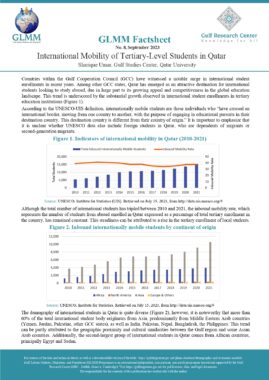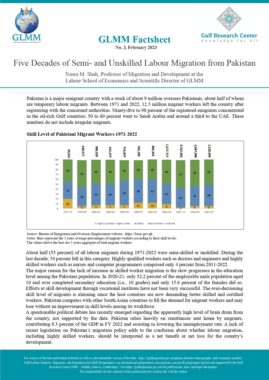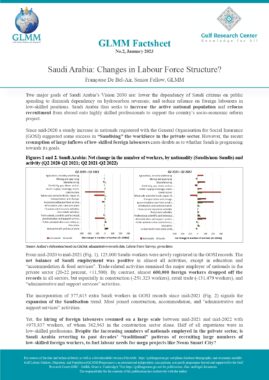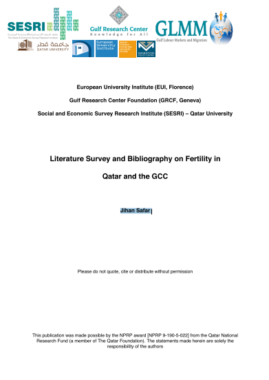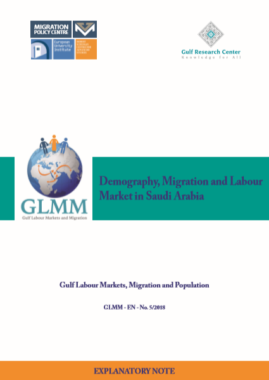Saudi Arabia: Labour Force Participation rates by nationality (Saudi /non-Saudi) and sex (%, Q1 2017-Q3 2021)
|
POP 3.3. Saudi Arabia: Labour Force Participation rates by nationality (Saudi /non-Saudi) and sex (%, Q1 2017 – Q3 2021)
|
|||||||||
| Saudis | Non-Saudis | Total | |||||||
| Males | Females | Total | Males | Females | Total | Males | Females | Total | |
| 2017 Q1 | 61.90 | 17.40 | 40.30 | 94.10 | 29.20 | 75.60 | 78.00 | 20.90 | 55.10 |
| 2017 Q2 | 62.10 | 17.40 | 40.30 | 94.00 | 21.60 | 73.40 | 78.20 | 18.70 | 54.20 |
| 2017 Q3 | 62.60 | 17.80 | 40.70 | 93.80 | 24.90 | 74.20 | 78.40 | 19.90 | 54.80 |
| 2017 Q4 | 63.40 | 19.40 | 41.90 | 94.20 | 24.20 | 74.20 | 79.00 | 20.90 | 55.60 |
| 2018 Q1 | 63.50 | 19.50 | 41.90 | 93.60 | 24.50 | 73.90 | 78.80 | 21.00 | 55.50 |
| 2018 Q2 | 63.50 | 19.60 | 42.00 | 93.90 | 29.00 | 75.50 | 79.00 | 22.40 | 56.20 |
| 2018 Q3 | 63.50 | 19.70 | 42.00 | 93.90 | 29.70 | 75.70 | 79.00 | 22.70 | 56.40 |
| 2018 Q4 | 63.00 | 20.20 | 42.00 | 93.80 | 25.90 | 74.50 | 78.70 | 21.90 | 55.90 |
| 2019 Q1 | 63.30 | 20.50 | 42.30 | 94.10 | 27.40 | 75.30 | 79.10 | 22.60 | 56.40 |
| 2019 Q2 | 66.00 | 23.20 | 45.00 | 94.10 | 26.90 | 75.20 | 80.40 | 24.30 | 57.90 |
| 2019 Q3 | 67.00 | 23.20 | 45.50 | 94.50 | 27.60 | 75.60 | 81.10 | 24.50 | 58.40 |
| 2019 Q4 | 66.60 | 26.00 | 46.70 | 93.60 | 28.80 | 75.20 | 80.40 | 26.80 | 58.80 |
| 2020 Q1 | 65.80 | 25.90 | 46.20 | 94.40 | 24.20 | 74.50 | 80.40 | 25.40 | 58.20 |
| 2020 Q2 | 65.60 | 31.40 | 48.80 | 91.80 | 28.70 | 73.90 | 78.90 | 30.60 | 59.40 |
| 2020 Q3 | 66.00 | 31.30 | 49.00 | 92.40 | 26.90 | 73.80 | 79.40 | 30.00 | 59.50 |
| 2020 Q4 | 68.50 | 33.20 | 51.20 | 92.40 | 29.30 | 74.50 | 80.60 | 32.10 | 61.00 |
| 2021 Q1 | 66.20 | 32.30 | 49.50 | 93.00 | 36.90 | 77.10 | 79.70 | 33.60 | 61.10 |
| 2021 Q2 | 65.70 | 32.40 | 49.40 | 92.30 | 37.20 | 76.70 | 79.20 | 33.80 | 60.80 |
| 2021 Q3 | 65.00 | 34.10 | 49.80 | 91.40 | 40.10 | 76.90 | 78.30 | 35.90 | 61.20 |
|
Source: Labour Force Survey, in: Labour Market Statistics, General Authority for Statistics (GAStat)
|
|||||||||
1. Data collection methodology
LFS were first conducted in 2001 and became bi-annual after 2006. Data were collected through nationally
representative household sample surveys, which sampling was based on most recent censuses.
Since 2016, Labour Force Surveys have been conducted and published on a quarterly basis, based on a
household telephone survey conducted by GAStat. Employment data extracted from administrative
records were also introduced as a complement to the results of Labour Force Surveys in Labour Market
Statistics’ publications, starting on Q1 2017.
The present data is based on estimates drawn from the results of the quarterly Labour Force Survey.
LFS results are published as rates only. Numerical estimates are unavailable.
GAStat Labour Market Statistics: Labour Force Survey (household telephone survey conducted by GAStat)
Sample size: 53,360 households, from all administrative regions of Saudi Arabia.
Population covered: residents in Saudi Arabia, Saudis and non-Saudis. All household members, including
domestic workers.
The survey provides estimates of the size of the total and working-age populations (aged 15 years and
above), inside and outside the labour force. It highlights the characteristics of the labour force (employed
and unemployed populations), and supplies the data to calculate key indicators of labour market such as
the unemployment and the labour force participation rates.
Household survey questionnaire: https://www.stats.gov.sa/sites/default/files/2021_Q3_LFS%20Questionnaire_EN%2022-08-2021.pdf.
Definitions: Population in the labour force:
Individuals (15 years and above) who contribute or are ready to contribute to the production of
commodities and services during the reference period of the survey. The labour force includes the
employed and unemployed populations.
Population outside the labour force:
Individuals (15 years and above) who is not classified as part of the labour force because they do not
work, do not seek a job, are unable to work, or are not ready to work during the survey reference period.
For example: Students, housewives, retired persons who do not work, individuals unable or unwilling to
work, or who do not look for a job for other reasons.
Labour force participation rate = (total labour force ÷ total population of working age (aged 15 years and over)) x 100
Definitions and categories used by GAStat in Labour Markets Statistics (employment; unemployment;
occupation and activity sectors, etc.) are based on international standards.
For LFS methodology and definitions, see: https://www.stats.gov.sa/en/node/9787.
2. Institution which provides data
General Authority for Statistics (GAStat)
3. Data availability
Since 2021, GAStat has been publishing separately the employment data taken from administrative
records, and unemployment/inactivity data as well as general indicators, calculated from the results of
the field interviews conducted by GAStat (Labour Force Survey).
The present time-series was taken from the Labour Market Statistics- Q3, 2021
(English and Arabic versions)
https://www.stats.gov.sa/sites/default/files/LM%20tables_Q3_2021_EN.xlsx
https://www.stats.gov.sa/sites/default/files/LMS%20Q03%202021E-Final_0.pdf
https://www.stats.gov.sa/sites/default/files/LM%20tables_Q3_2021_AR_0.xlsx
https://www.stats.gov.sa/sites/default/files/LMS%20Q03%202021A-Final_2.pdf
Date of access: January 2022.
Similar Posts:
- Saudi Arabia: Unemployment rates by nationality (Saudi /non-Saudi) and sex (%, Q1 2017-Q3 2021)
- Saudi Arabia: Labour Force Participation rates by nationality (Saudi /non-Saudi) and sex (%, Q1 2017-Q2 2022)
- Saudi Arabia: Unemployment rates by nationality (Saudi /non-Saudi) and sex (%, Q1 2017-Q2 2022)
- Saudi Arabia: Employed population by nationality (Saudi / non-Saudi) and sex (Q1 2017 – Q3 2021)
- Saudi Arabia: Labour Force Participation Rates by nationality (Saudi/non-Saudi) and sex (Q1 2021-Q1 2024)
Tags: Employment, Foreign and National Populations, Labour Market, Nationals and Foreign Labour, Saudi Arabia

































